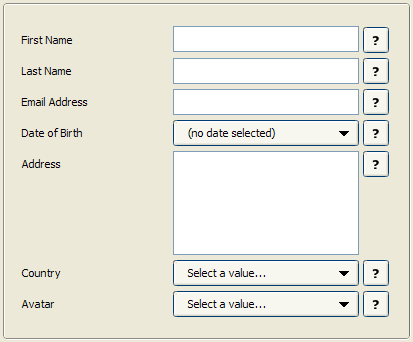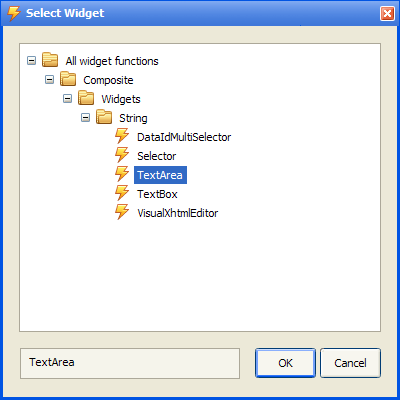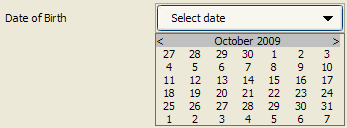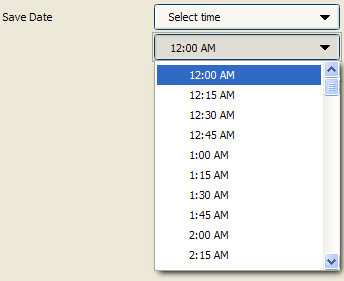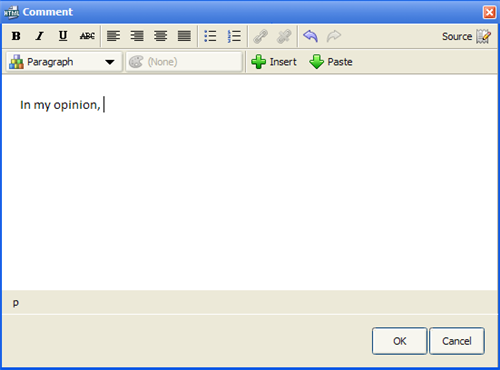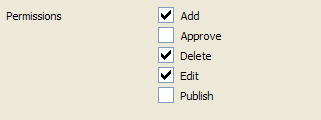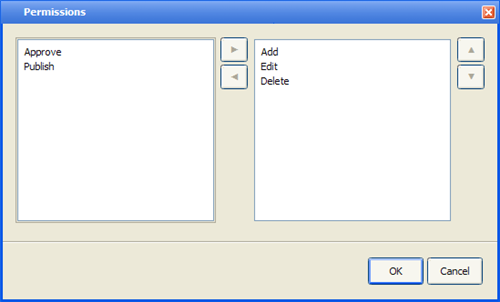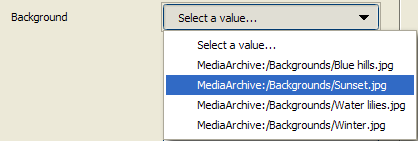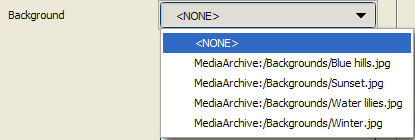 Forms Renderer
Forms Renderer
Created by Orckestra
A Guide to Creating Data Types
- Introduction
- Creating and Managing Datatypes
- Creating and Managing Fields
- Widgets
- Creating Specific Fields
- Using Input Forms with Datatypes
- Test Your Knowledge
Widgets
Widgets are controls used in input forms that serve as form fields. You can see widgets when you add data items in C1 or in input forms on web pages. They get values the user enters and pass these values to the datatype fields they are mapped to. Each widget has a specific field behind it. The type of the widget depends on the type of this field.
Figure 16: Widgets
When you add fields to a datatype, C1 sets a default widget for this field. However, you can replace the default widget with some other widget available for this type of the field.
Some simple field types might only have one widget associated with it (for example, the integer field), while other field types can have a set of widgets you can choose from (for example, the string field).
Let’s start with learning how to set a widget for a field and go on to have a look at the widgets available in C1.
When you add a field and set its basic and advanced properties, you might also need to select a proper widget to render this field. C1 selects a default widget for the field you add. You can however replace the default widget with some other widget if more are available for this type of a field.
To select a widget for a field:
- Select a field you want to edit.
- On the Advanced tab, click the Widget type field to open the Field Widget Configuration window. It already has a widget selected.
Figure 17: Currently selected widget
- Select the current widget and click Delete. This will enable the Add New button.
- Click Add New to open the Select Widget window. Here, you can see all the widgets available for this specific field.
Figure 18: Selecting a different widget
- Locate and select the widget you want to set for the field and click OK.
- Click OK in the Field Widget Configuration window.
The Widget type field is now set to the widget you have selected.
Figure 19: Newly selected widget
C1 features a number of widgets that can be used with one or more datatype fields:
- TextBox
- TextArea
- DateSelector
- DateTimeSelector
- CheckBox
- BoolSelector
- VisualXhtmlEditor
- DataIdMultiSelector
- Selector
- Optional Selector
- ImageSelector
- MediaFileSelector
- MediaFileFolderSelector
Let’s have a closer look at some of these widgets.
The TextBox widget serves as an input control for texts strings and numbers.
Figure 20: TextBox
This widget is available for the String, Integer, decimal and GUID fields:
- Composite.Widgets.String.TextBox
- Composite.Widgets.Integer.TextBox
- Composite.Widgets.Decimal.TextBox
- Composite.Widgets.Guid.TextBox
The TextBox widget is default for the String, Integer, Decimal and GUID fields.
The TextArea widget serves as an input control for large texts.
Figure 21: TextArea
This widget is only available for the String field:
- Composite.Widgets.String.TextArea
The DateSelector widget allows the user to select a date as an input value. As the user clicks the widget, a month calendar drops down where the user can navigate to the specific year and a month and select a date.
Figure 22: DateSelector
This widget is only available for the Date field:
- Composite.Widgets.Date.DateSelector
The DateSelector widget is default for the Date field.
The DateTimeSelector widget allows the user to select not only a date but also time as an input value. As the user clicks the widget, a month calendar drops down where the user can navigate to the specific year and a month and select a date. When the date is set, the user can click the widget again and get a list of predefined times to choose from
Figure 23: DateTimeSelector
This widget is only available for the Date field:
- Composite.Widgets.Date.DateTimeSelector
The CheckBox widget serves as an input control for selecting one of the two opposite options. Switching between the two options implies checking and unchecking the check box.
Figure 24: CheckBox
This widget is only available for the Boolean field:
- Composite.Widgets.Bool.CheckBox
The CheckBox widget is default for the Boolean field.
The BoolSelector widget is a variation of the CheckBox widget in its purpose. While the checkbox allows the user to switch between two options by checking and unchecking the check box, the BoolSelector widget allows the user to select one of the two radio buttons representing two options.
Figure 25: BoolSelector
This widget is only available for the Boolean field:
- Composite.Widgets.Bool.BoolSelector
The VisualXhtmlEditor widget allows the user to launch Visual Editor to specify XHTML-formatted text as an input value for a string field.
Figure 26: VisualXhtmlEditor
Figure 27: Launched Visual XHTML Editor
This widget is only available for the string field:
- Composite.Widgets.String.VisualXhtmlEditor
The DataIdMultiSelector widget serves to present a list of input values available for multiple choices. The input values represent entities such as C1 image files, C1 media files, C1 media folders, C1 pages or data items of available datatypes, which is configured in the widget’s parameters.
It comes in two UI views: verbose and compact, which is also configurable in the widget’s parameters.
The verbose UI view lists values with check boxes next to them. In this way, the user can select one or more values.
Figure 28: DataIdMultiSelector: Verbose UI View
The compact UI view allows the user to launch the selection editor where the user can select one or more values moving them from the list of available values to the list of selected ones.
Figure 29: DataIdMultiSelector: Compact UI View
Figure 30: DataIdMultiSelector: Selecting values
This widget is only available for the string field:
- Composite.Widgets.String.DataIdMultiSelector
The Selector widget serves to present a list of input values. For most field types it is associated with, it shows a drop down list where the user can only select one value.
Figure 31: Selector
This widget is available for the string field and data reference fields of different reference types (including available datatypes):
- Composite.Widgets.String.Selector
- Composite.Widgets.CompositeDataTypesIImageFile.Selector
- Composite.Widgets.CompositeDataTypesIMediaFile.Selector
- Composite.Widgets.CompositeDataTypesIMediaFileFolder.Selector
- Composite.Widgets.CompositeDataTypesIPage.Selector
The Selector widget is default for the Data Reference fields of C1 Page and datatype reference types.
Like the Selector widget, the OptionalSelector widget serves to present a list of input values. However, it includes another value: <NONE>, which allows the user not to select any of the values available.
Figure 32: OptionalSelector
This widget is available for the string and data reference fields of different reference types (including available datatypes):
- Composite.Widgets.String.OptionalSelector
- Composite.Widgets.CompositeDataTypesIImageFile.OptionalSelector
- Composite.Widgets.CompositeDataTypesIMediaFile.OptionalSelector
- Composite.Widgets.CompositeDataTypesIMediaFileFolder.OptionalSelector
- Composite.Widgets.CompositeDataTypesIPage.OptionalSelector
Apart from the Selector and OptionalSelector widgets you can use with the Data Reference fields, there are specific selector-like widgets available for C1 Page, C1 Image File, C1 Media File and C1 Media Folder reference types:
- PageSelector
- ImageSelector
- MediaFileSelector
- MediaFileFolderSelector
Each of these widgets is default for the Data Reference field of the corresponding reference type.
Please note that you cannot use these widgets with Composite.Forms.Renderer, in which case you should replace them with the corresponding Selectors or Optional Selectors. (Please see Using Input Forms with Datatypes for more information.)


